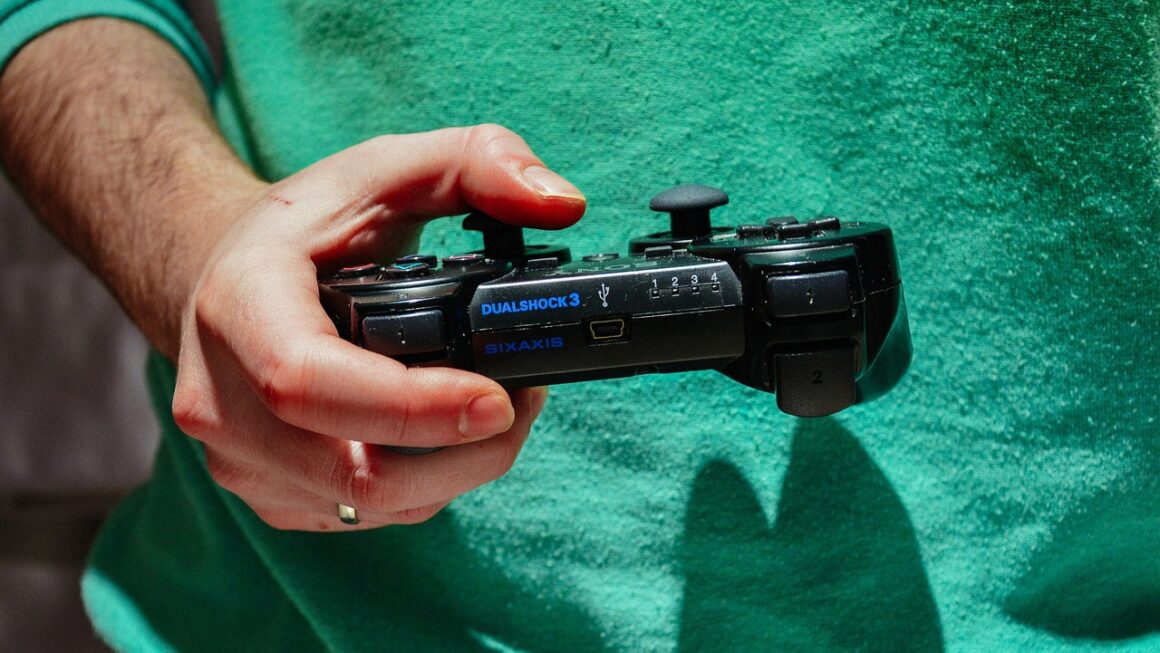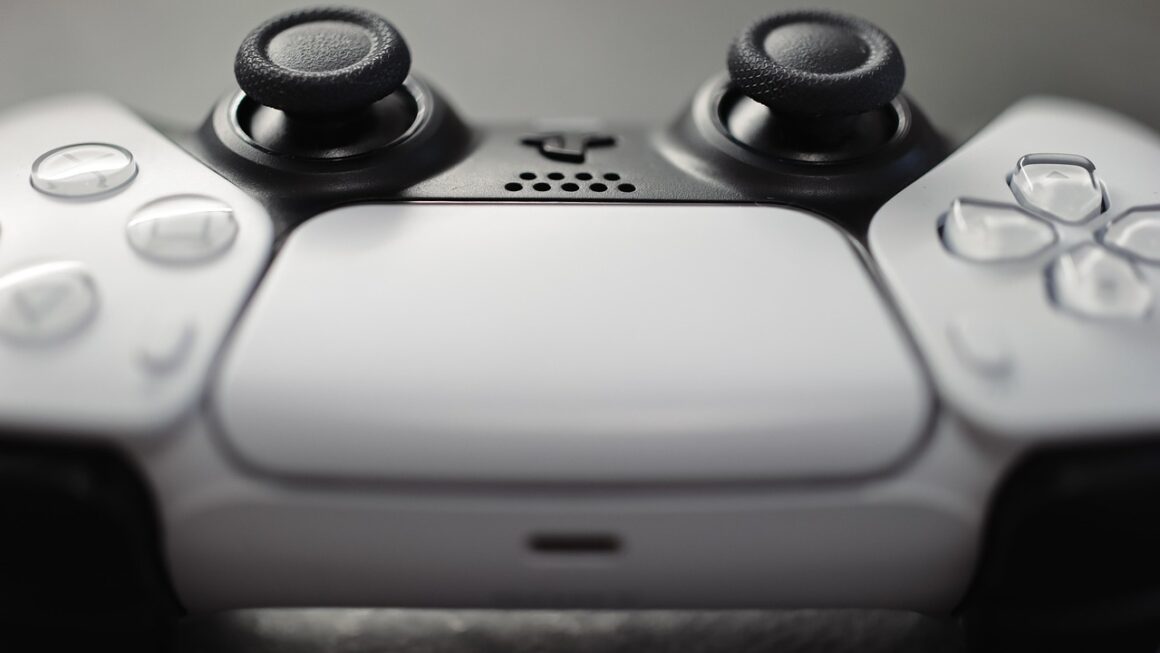Gaming peripherals are more than just accessories; they’re the tools that translate your skills and strategies into in-game victories. From the responsiveness of your mouse to the immersive audio of your headset, these devices can significantly impact your gameplay experience. Choosing the right peripherals can mean the difference between climbing the leaderboards and languishing in frustration. Let’s dive deep into the world of gaming peripherals and explore how to select the best gear for your needs.
The Gaming Mouse: Precision and Control
The mouse is arguably the most crucial peripheral for many gamers, particularly those who play FPS, MOBA, or RTS games. A good gaming mouse offers precision, comfort, and customization to enhance your control and accuracy.
Sensor Technology
- Optical Sensors: These use an LED and camera to track movement. They’re generally more accurate and perform better on a wider range of surfaces than laser sensors. Popular optical sensor brands include Pixart.
- Laser Sensors: While once considered superior, laser sensors can suffer from acceleration and jitter issues on some surfaces. However, high-end laser mice can still be viable options.
- DPI (Dots Per Inch): DPI measures the sensitivity of the mouse. Higher DPI means the cursor moves further with less physical movement of the mouse. Most gamers find a DPI range of 400-3200 optimal, depending on personal preference and screen resolution. Don’t be swayed by marketing hype claiming incredibly high DPIs are necessary. Experiment and find what feels best for you.
- Polling Rate: Measured in Hz, the polling rate determines how often the mouse reports its position to the computer. A higher polling rate (e.g., 1000Hz) means more frequent updates, resulting in smoother and more responsive tracking.
Ergonomics and Design
- Grip Style: Different grip styles (palm, claw, fingertip) require different mouse shapes.
Palm Grip: The entire hand rests on the mouse. Look for larger, ergonomically shaped mice.
Claw Grip: Only the fingertips and the back of the palm touch the mouse. Mid-sized mice with a curved back are ideal.
Fingertip Grip: Only the fingertips touch the mouse. Smaller, lightweight mice are best.
- Weight: Lighter mice are often preferred for FPS games, allowing for quicker movements. Heavier mice can offer more stability and control for other genres. Many mice now come with adjustable weights.
- Wired vs. Wireless: Wireless mice have improved significantly, offering negligible latency. However, wired mice still offer a reliable connection without the need for charging.
- Buttons: Programmable buttons can be assigned to in-game actions, macros, or other functions. More buttons can be beneficial for MOBA and MMO players.
- Practical Example: The Logitech G Pro X Superlight is a popular choice for FPS gamers due to its lightweight design, excellent optical sensor, and comfortable shape for claw and fingertip grips.
The Gaming Keyboard: Responsiveness and Customization
The gaming keyboard is another essential peripheral that directly impacts your performance. Mechanical keyboards are generally preferred over membrane keyboards for their responsiveness, durability, and tactile feedback.
Mechanical Switches
- Linear Switches (e.g., Cherry MX Red): Smooth and consistent keypresses without a tactile bump. Ideal for fast-paced games where quick reaction times are crucial.
- Tactile Switches (e.g., Cherry MX Brown): Provide a noticeable tactile bump when the key actuates, offering feedback that a keypress has been registered.
- Clicky Switches (e.g., Cherry MX Blue): Similar to tactile switches but with an audible “click” sound. Popular for typing but can be distracting for gaming, especially with multiple players.
- Actuation Point and Travel Distance: These specifications determine how far a key needs to be pressed for it to register. Shorter actuation points and travel distances allow for faster keypresses.
Keyboard Layout and Features
- Full-Size: Includes a number pad and function keys.
- Tenkeyless (TKL): Omits the number pad, saving space and allowing for more ergonomic mouse placement.
- 60%: Extremely compact, removing the function row and arrow keys. Requires learning new key combinations.
- Anti-Ghosting and N-Key Rollover (NKRO): Ensure that all keypresses are registered, even when multiple keys are pressed simultaneously. NKRO is generally preferred.
- Programmable Keys and Macros: Allow you to assign custom functions to specific keys, improving efficiency and allowing for complex commands to be executed with a single keypress.
- Backlighting: RGB lighting can add a personal touch and improve visibility in low-light environments.
- Practical Example: The Corsair K95 RGB Platinum XT is a full-size keyboard with Cherry MX switches, programmable macro keys, and customizable RGB lighting.
Ergonomic Considerations
- Wrist Rest: Prolonged gaming sessions can lead to wrist strain. A wrist rest can help to maintain a neutral wrist position and reduce discomfort.
- Keyboard Angle: Adjusting the keyboard angle with adjustable feet can also help reduce strain.
- Split Keyboards: For serious ergonomic benefit, split keyboards that allow for independent positioning of each hand can significantly reduce the risk of RSI.
Gaming Headsets: Immersive Audio and Communication
A high-quality gaming headset provides immersive audio and clear communication, allowing you to hear crucial in-game sounds and coordinate with teammates.
Audio Quality
- Drivers: Larger drivers generally produce better sound quality, especially in the low-frequency range (bass).
- Frequency Response: A wider frequency response (e.g., 20Hz-20kHz) allows you to hear a broader range of sounds.
- Surround Sound: Virtual or true surround sound enhances immersion and provides directional audio cues, allowing you to pinpoint the location of enemies.
Virtual Surround Sound: Simulates surround sound using software.
True Surround Sound: Uses multiple physical drivers in each earcup.
- Closed-Back vs. Open-Back:
Closed-Back: Isolates sound, preventing distractions and providing more bass.
Open-Back: Provides a wider soundstage and more natural sound but offers less isolation.
Microphone Quality
- Noise Cancellation: Reduces background noise, ensuring clear communication.
- Polar Pattern:
Unidirectional: Picks up sound from a single direction, minimizing background noise.
Omnidirectional: Picks up sound from all directions, suitable for streaming or recording multiple voices.
- Detachable or Retractable Microphone: Offers flexibility and convenience.
Comfort and Durability
- Earcups: Over-ear (circumaural) earcups provide better isolation and comfort than on-ear (supraaural) earcups.
- Material: Leatherette or fabric earcups are common. Fabric is generally more breathable but can be harder to clean.
- Weight: A lightweight headset is more comfortable for long gaming sessions.
- Practical Example: The SteelSeries Arctis Nova Pro Wireless is a premium gaming headset with excellent audio quality, a clear microphone, and comfortable earcups.
Other Important Peripherals and Accessories
Beyond the core peripherals, several other accessories can enhance your gaming experience.
Gaming Monitors
- Refresh Rate: Measures how many times per second the monitor updates the image. Higher refresh rates (e.g., 144Hz, 240Hz) result in smoother motion and reduced motion blur.
- Response Time: Measures how quickly a pixel can change colors. Lower response times (e.g., 1ms, 4ms) reduce ghosting and blurring.
- Resolution: Higher resolutions (e.g., 1440p, 4K) provide sharper and more detailed images.
- Panel Type:
TN: Fastest response times but poorer color accuracy.
VA: Good contrast ratios and viewing angles but slower response times than TN.
IPS: Excellent color accuracy and viewing angles but can have slower response times than TN.
Gaming Chairs
- Ergonomics: Proper lumbar support, adjustable armrests, and a high backrest can improve posture and reduce back pain.
- Material: Leather, fabric, and mesh are common materials. Mesh is the most breathable.
- Adjustability: Height, tilt, and recline adjustments allow you to customize the chair to your preferences.
Mousepads
- Surface Material: Cloth, hard plastic, and hybrid materials are common. Cloth provides more control, while hard plastic provides more speed.
- Size: Larger mousepads allow for more freedom of movement.
- Stitched Edges: Prevent fraying and increase durability.
- Practical Example: Consider a high refresh rate monitor with a low response time if playing fast-paced games, and an ergonomic gaming chair with lumbar support for long gaming sessions. A large cloth mousepad can enhance accuracy and comfort.
Conclusion
Choosing the right gaming peripherals is a crucial investment in your gaming experience. By understanding the key features and specifications of each device, you can select the gear that best suits your needs and preferences. Consider your preferred game genres, grip style, and budget when making your decisions. Remember to prioritize comfort, responsiveness, and durability to ensure that your peripherals will enhance your gameplay for years to come. Happy gaming!




